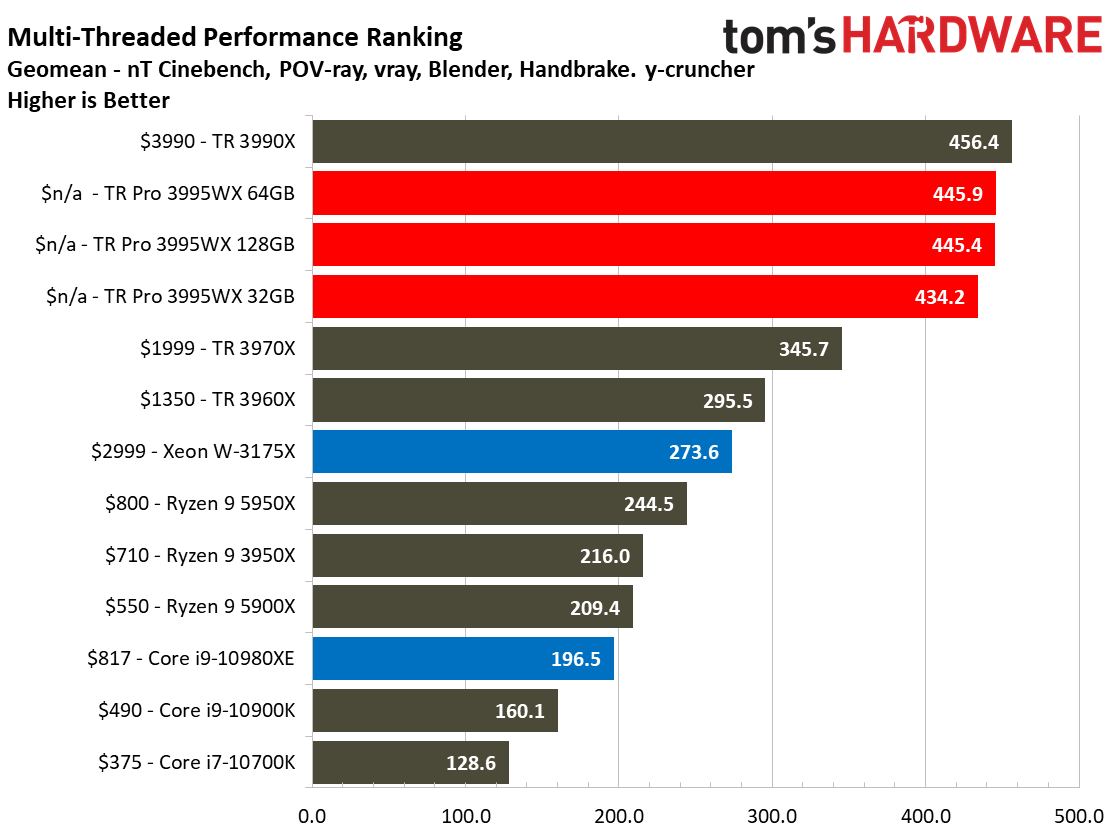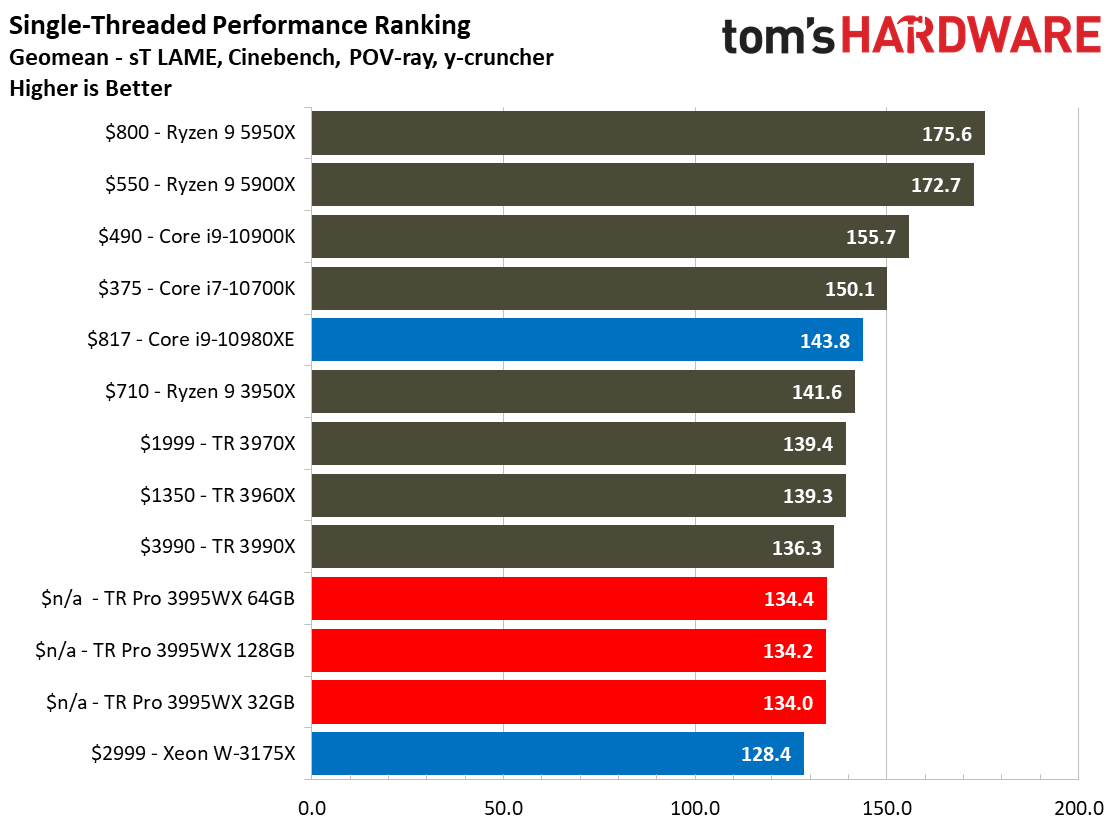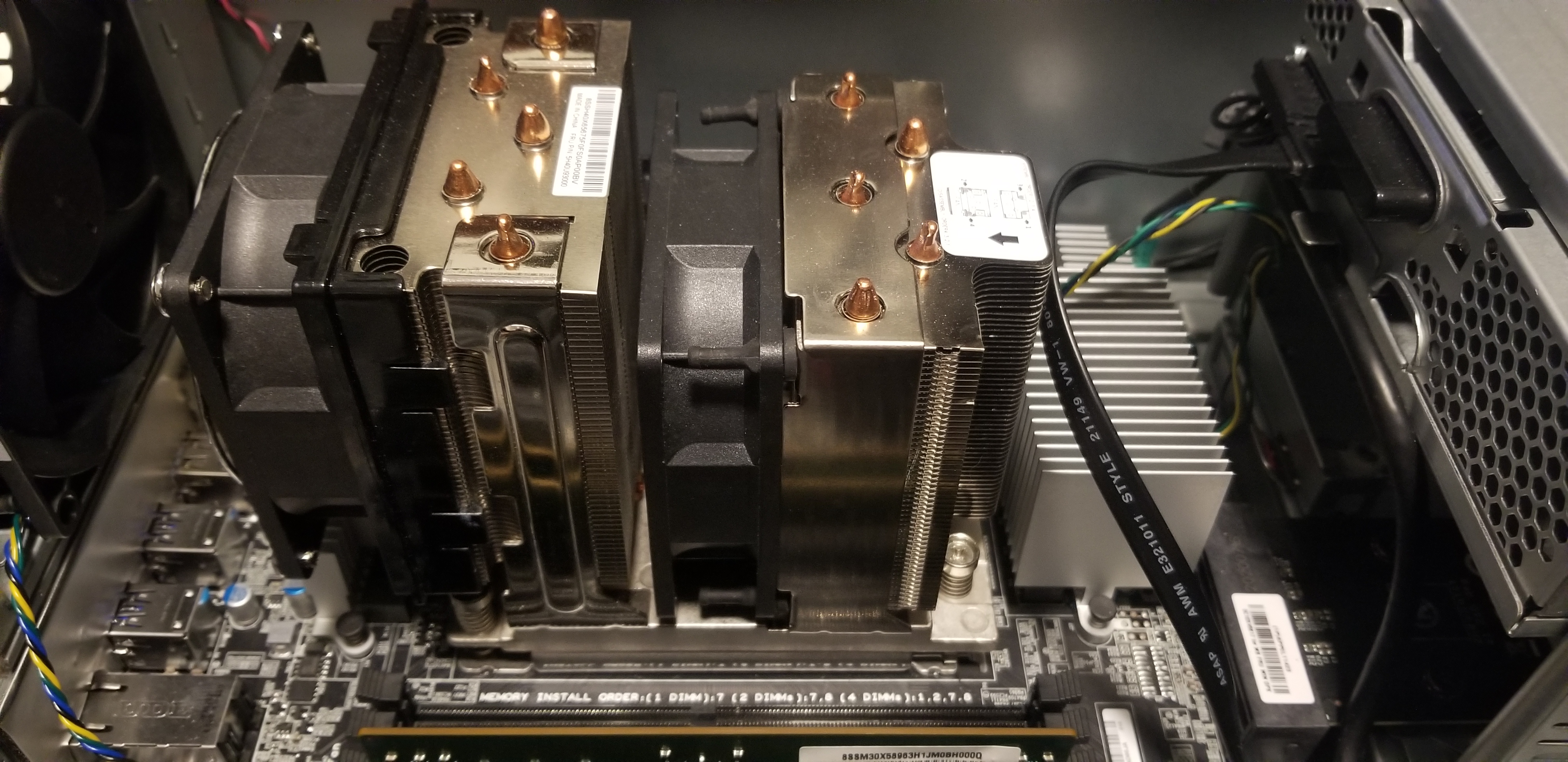Why you can trust Tom's Hardware
Lenovo's adoption of the Threadripper Pro chips for its ThinkStation P620 platform could be a watershed moment for AMD as it works to gain deeper penetration into the high-volume workstation market. The company also offers these chips, and supporting motherboards, on the retail market, but hasn't shared pricing details yet.
Intel has already felt a considerable amount of pricing pressure on its mainstream, HEDT, and server platforms, forcing it to significantly cut per-core pricing as it marches forward to new product generations. For instance, the Xeon Scalable line took a 60% pricing haircut for dual-socket and below systems with the Cascade Lake Refresh generation. We can also expect the company to become more competitive with its Xeon W pricing with its next round of chips, too.


Despite AMD's leading core counts from its consumer-focused Threadripper lineup, the lack of properly validated workstations has hampered its adoption in the professional segment. Threadripper's copious core counts and PCIe 4.0 connectivity have enticed many professional users, particularly in the movie industry. Still, those users have to cobble together systems that lack the support and stability offered by qualified OEM systems. They also have to contend with a lack of professional-class manageability and security features.
Lenovo's ThinkStation P620 addresses those concerns, particularly with the enablement of TPM security, memory encryption support, and fully-validated ECC memory support. Other perks of a fully-validated system also come into play, such as on-site warranty service and certified software support.
AMD's 64-, 32-, 24- and 12-core Threadripper Pro models offer multiple entry points to octo-channel memory and 128-lane PCIe 4.0 support, which could woo professional customers away from the company's own line of powerful 16- and 12-core desktop PC processors. While the PCIe 4.0 interface doesn't equate to large gains in many consumer-class workloads, it offers tremendous improvements in professional workstation graphics and storage performance, provided the application is optimized for the faster interface. That gives AMD a bigger performance advantage than implied on the spec sheet. The PCIe 4.0 GPU and storage ecosystem, not to mention networking NICs, is still expanding, so the forward-looking support will ensure that workstations armed with Threadripper Pro processors can take advantage of the latest interface tech, while Intel's systems remain hamstrung by the PCIe 3.0 bus.
The particulars of our test setups presented some challenges in terms of 100% like-for-like performance comparisons with the consumer-oriented Threadripper processors. Still, it's clear that Threadripper Pro offers more than enough incentive, like validated support, more PCIe lanes, memory channels, and memory capacity for professionals to make the jump to the pricier systems. We can only wonder how the chips would perform if enabled with more robust cooling and aggressive power delivery. With other WRX80 motherboards on the cusp of release, we suspect it won't be long until we find out.
Threadripper Pro is still subject to many of the same vagaries as the standard Threadripper processors, but the highly specialized processor provides incredible performance in a cross-section of workloads. The processors even performed admirably in GPU-driven workloads, which was a notable weakness of the previous-gen models. For those that need the utmost in performance in workloads that rely heavily upon memory throughput and capacity, like crash and airflow simulations and rendering applications, there really isn't a competitive alternative in a single-socket system. In fact, Threadripper Pro even outpaces many dual-socket solutions in the targeted workloads. Competing Intel-powered workstations often lose in the price-to-performance ratio, too.
Get Tom's Hardware's best news and in-depth reviews, straight to your inbox.
Lenovo is a trusted industry leader in the workstation segment, which will likely spur other OEMs and a broader spate of ISVs to adopt the Threadripper Pro platform for workstations. The development work that went into both the hardware side of the equation, particularly with the WRX80 motherboards, and the work done to enable software optimizations and ISV certifications, will also benefit other system designers, thus paving the way for Threadripper Pro's broader uptake in the workstation market. Not to mention pave the way for the inevitable Zen 3-powered models.
MORE: Best CPUs
MORE: Intel and AMD CPU Benchmark Hierarchy
MORE: All CPUs Content
Current page: The Threads Are Sufficiently Ripped
Prev Page AMD Threadripper Pro 3995WX Workstation CPU and GPU Benchmarks
Paul Alcorn is the Editor-in-Chief for Tom's Hardware US. He also writes news and reviews on CPUs, storage, and enterprise hardware.
-
CerianK Probably a pointless question, but I assume the 16GB are dual-rank... I would be curious how 16GB single-rank (which I understand exist, but are the minority in the market) modules would perform in the 128GB configuration? Probably no difference, but might be worth exploring with a few select benchmarks, if possible.Reply -
gatg2 hate to be that guy but, it's not actually the first PCIe 4.0 capable workstation on the market, that honor goes to the Talos II Secure WorkstationReply
https://www.raptorcs.com/TALOSII/ -
fellow I love these, especially the 12-16 cores at 4GHz, much closer to 5900 and 5950 for lightly threaded workloads. Great solution for those wanting expandable server and workstation features.Reply
I like the look of those Raptors too, especially the pci-4 and memory bandwidth. May get a Blackbird for testing and open source (mostly) fast hardware. See Phoenix coverage Part 2— the first were not as promising.
For Threadripper Pro, has there been any information about the socket and CPU upgrade path?
My main concern is the upcoming release of Zen3 Threadrippers. I imagine there will then be a Zen3 Threadripper Pro in a couple quarters or a year from now. The memory and pci expansion makes this an excellent platform for future growth.
Since AMD has been forward looking by using the same socket for Ryzen, is it safe to expect the Zen3 TRPro will be accepted in this new socket?
Gracias,
fellow -
Endymio Reply... the most powerful workstation chip on the market - it's 64 cores easily outweigh Intel's
Emergency edit on aisle four, please.
Also, do I misunderstand the article, or has Toms yet again pronounced a verdict on a product they as yet haven't seen, or has even been released? -
Endymio Reply
Examine the highlighted word.Mandark said:Intel has nothing to touch the thread ripper so there’s nothing wrong with that statement -
hitchhiker0 Fantastic! I like them very much.Reply
Picking a Threadripper Pro 3975WX, 128 GB RAM, some SSD, some NVidia GPU and make a virtual desktop infrastructure for computer-aided designing.
You can host 4-6 virtual desktops quickly. -
Stefan Dyulgerov Hey in your benchmarks, can you include compilation of the Unreal Engine editor?Reply
The engine is quite taxing on the cpu both c++ and the shaders.
Most people that are alone struggle with it. If you work in studio you can share cores, but at home alone:) -
mikewinddale Nice review, thanks.Reply
But I just discovered something interesting that you missed in the review:
If you install six (6) dimms, applications like AIDA64, CPU-Z, etc. will recognize it as "hexa" channel, but benchmarks will reveal that the actual memory throughput is equivalent to merely dual-channel.
So you can populate four or eight DIMMs, but be careful with six.
For my application, I started a 3955WX with 4x64 GB RAM. I discovered that wasn't enough, so I upgraded to 6x64. My application now had enough RAM, but performance declined. So I had to upgrade to 8x64. -
robcowart @mikewinddale In my testing it is even worse than sticking to 4 or 8 populated channels. Anything less than all 8 channels has a significant impact on performance. The hardware setup for these tests was: 3995wx, ASUS Pro Sage, 256GB 3200MHz, writing to 4 x Samsung 980 Pro in RAID-0. Interesting is that while throughput dropped, meaning that technically the system is doing less work, the CPU utilization increased when all 8 memory channels weren't populated. I do wonder if the different channel-to-chiplet affinity between your 16-core and my 64-core model is responsible for why you don't see as big of a hit as I do with only 4 channels populated.Reply
